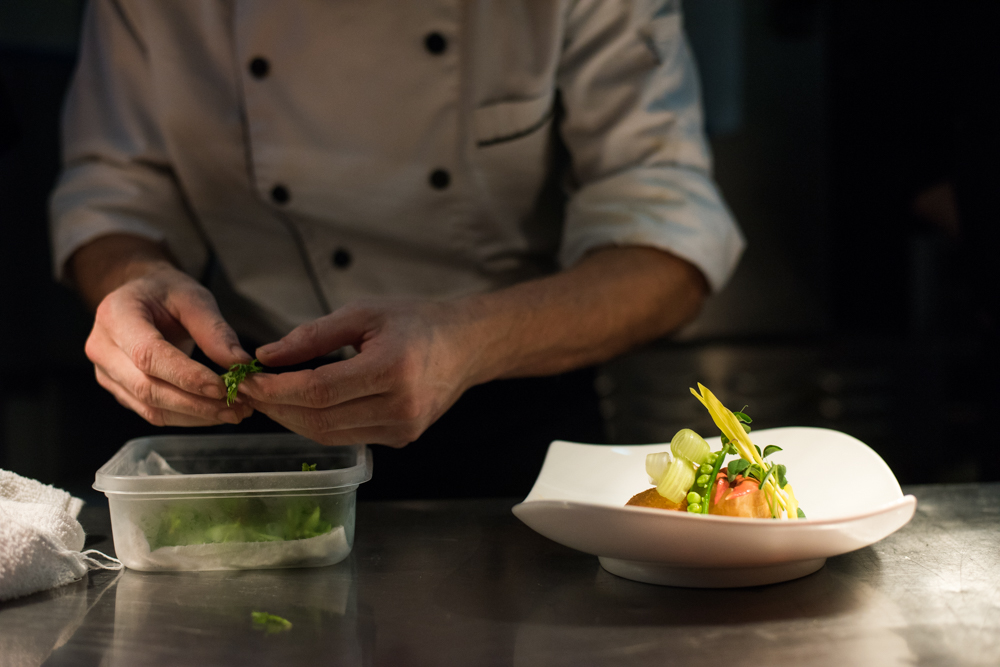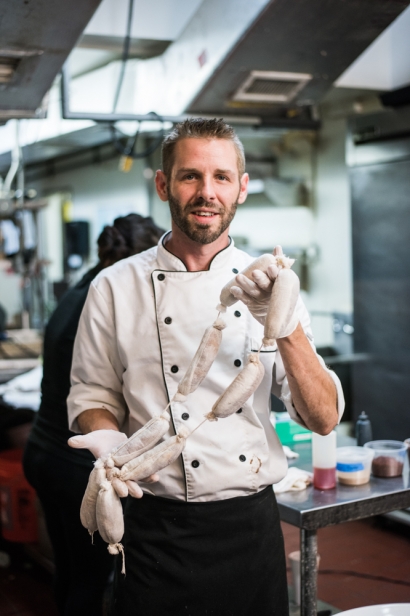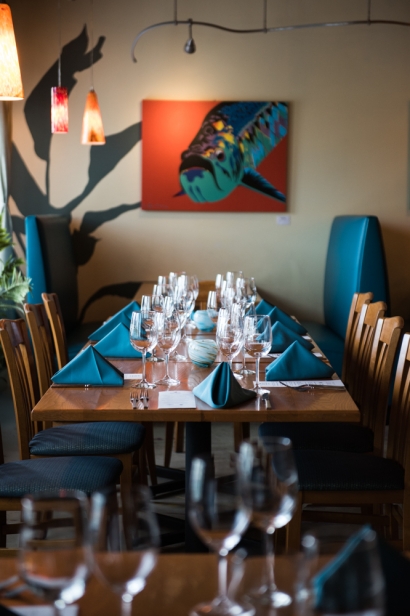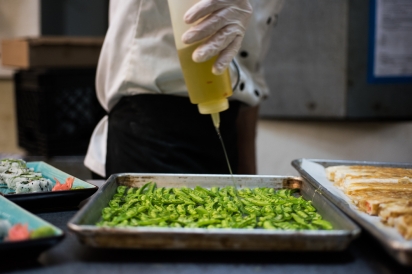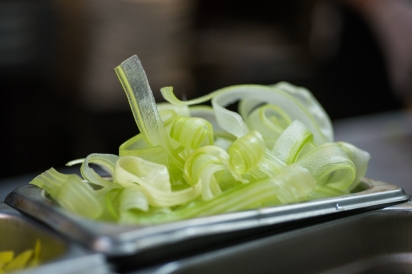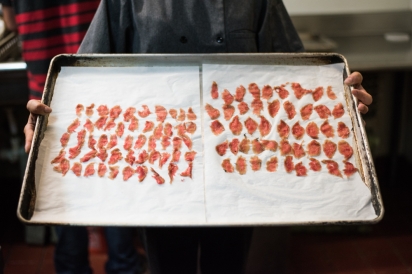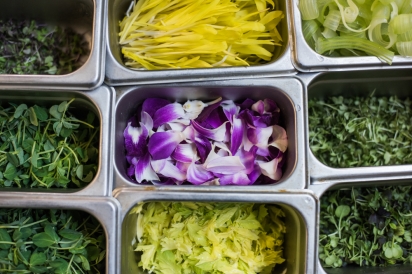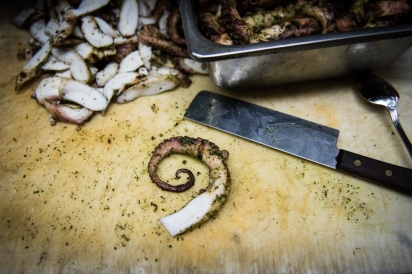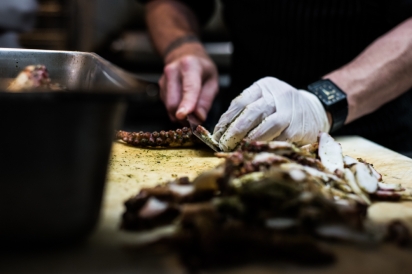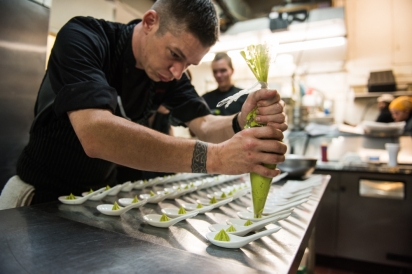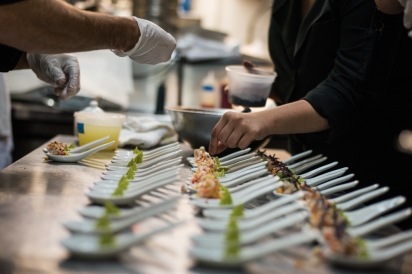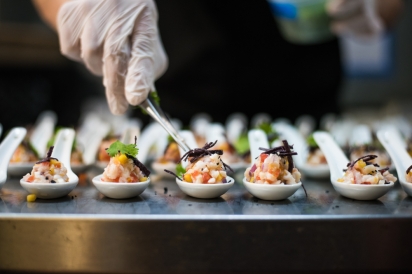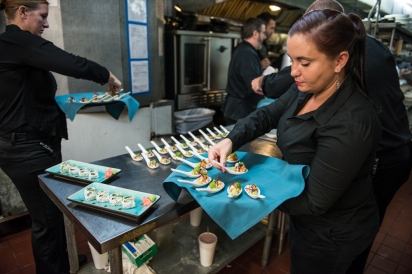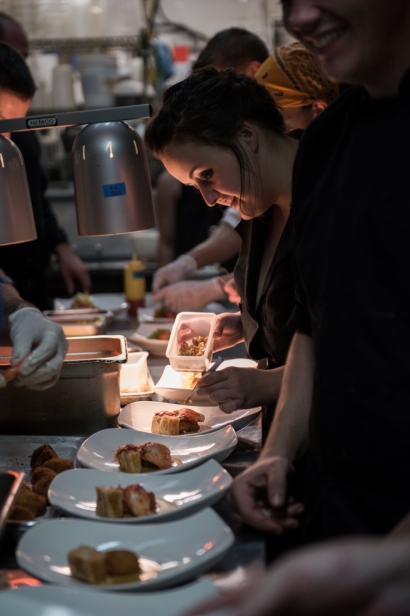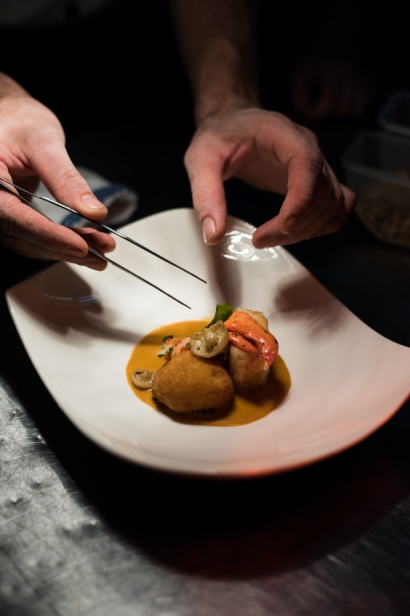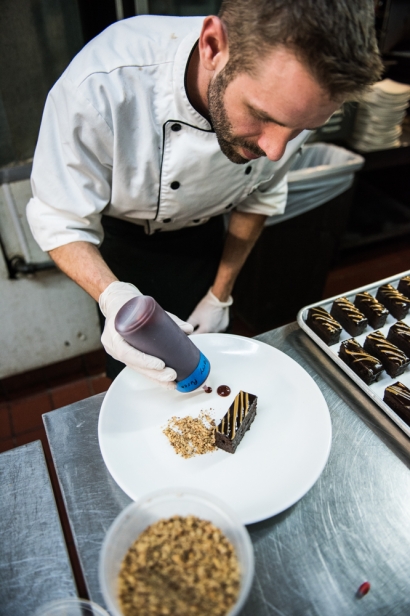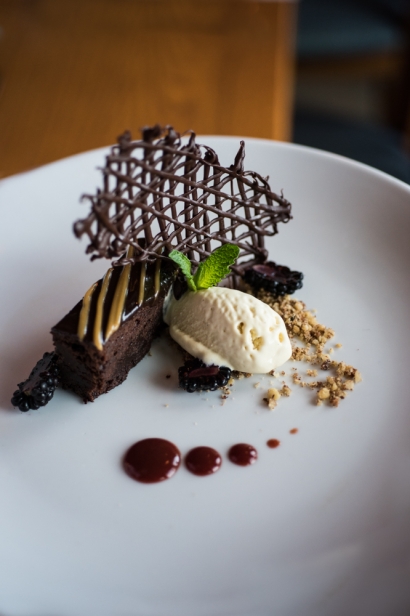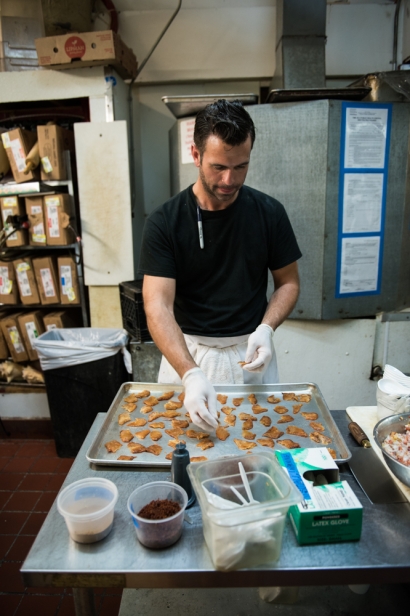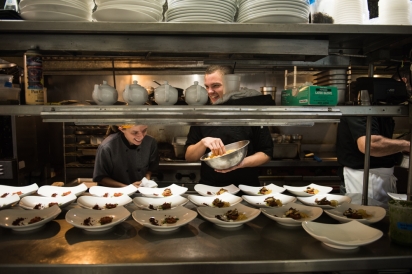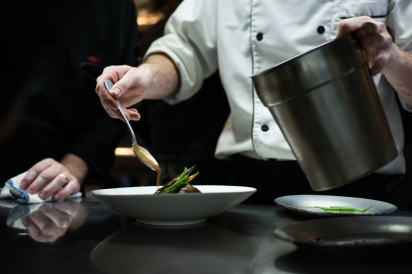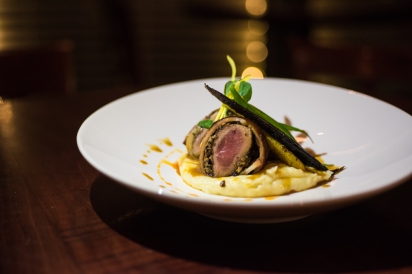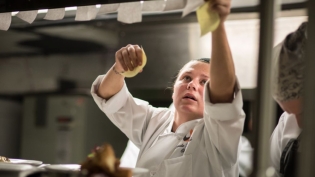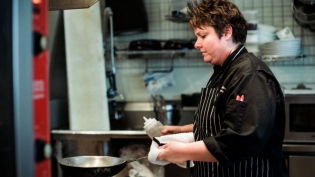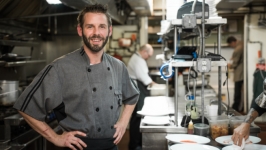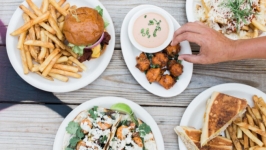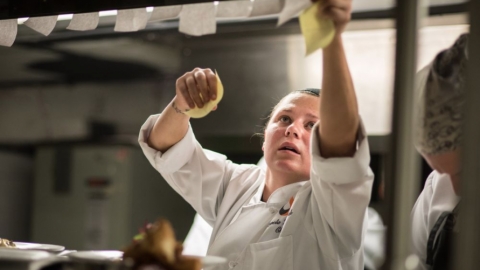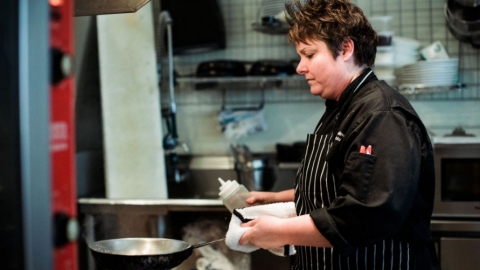Off the Line: Blackfly Restaurant
Pairing food with wine is a regular task for Matthew Brown, Executive Chef at Collage and Blackfly Restaurants in St. Augustine, where wine lists routinely complement his menu and daily specials. “With a wine dinner," however, "you start with the wine selection, from light to full body, and you build the food around the flavor profiles of each wine,” explains Chef Brown. At a recent event featuring Justin Wine, Chef Brown and his team had the opportunity to build a multi-course epicurean feast around a hand-picked selection of wines. Edible was invited behind the scenes to capture the kitchen in action, where we learned a bit about the process of creating a pop-up dinner for 50 guests.
As soon as the wine was chosen, Chef Brown and his team drafted a culinary blueprint, then had six weeks to create a menu. His goal? A dinner to complement and accentuate each wine, utilize local and seasonal ingredients, be cost-effective, and strive for total utilization with little to no waste. Ready, set, go.
Planning the kitchen logistics of a five-course dinner (with amuse-bouche to boot) is vital to successful dinner planning. Chef Brown’s approach to the dinner’s menu was, as he put it, “creative but realistic,” and took into account factors such as the number of steps needed for the execution of each dish and what could be prepped in advance. Plating was carefully mapped out, right down to the tweezing of microgreen garnishes. As the event got underway, the kitchen became an assembly line of kitchen staff. “I couldn’t create a dish that had more steps than I have people.”
The menu was also driven by total utilization of all ingredients. That is, the ability to maximize the use and potential of each ingredient in order to reduce waste. “I live by that philosophy,” says Chef Brown. For this dinner, lobster in the second course was served poached (claw meat), in a strudel (tail) and as broth (for everything else). The corn pudding croquette served alongside the lobster highlighted the essence of the vegetable and removed a common complaint about corn – the 1/8-inch skin on kernels that always gets stuck in teeth. The kernel flesh was made into corn pudding and cobs were boiled into corn stock, which when reduced, became a natural starch that held the croquette together.
The next course featured duck, and as expected, all parts of the bird found their way onto the plate. The duck confit agnolotti was served with house-made duck breast prosciutto and duck skin chicharrones in a truffled mushroom consommé made from duck stock. “When we get an entire duck in, we aim to reduce waste. It also gives my team an opportunity to learn how to use all parts of an animal or vegetable." And Chef Brown believes that knowledge and experience is important in helping his team develop.
Before the event, Chef Brown also held a dry run of the dinner to fine-tune both the service and flavors of the meal. “We want to make sure the food is not overshadowing or overpowering the wine,” he said. By tasting the chocolate tarte, for instance, he was able to ensure the percentage of cocoa in the dessert wouldn't make the wine taste bad. Staging a full practice beforehand allows for recipe revision.
The night of the event, Chef Brown and his team were prepared with diagrams and step-by-step instructions on plating each course. The lobster course, for instance, unfolded as one spoonful of sauce, croquette, strudel, claw, 3 mushrooms, pea pod, corn shoots, celery and a final dusting. Based on reservations, there were no guest dietary restrictions or special requests, though Chef Brown thoughtfully prepared a back-up to care for pop-up requests.
With the first course underway, word came that one guest did not eat lamb or duck, and the kitchen team quickly assembled an alternative to pair equally well with designated wines. The rest of the evening's meal continued as planned.
Most people never realize the extent of effort involved in delivering a dinner like the Justin Wine event at Blackfly. We book tickets, mark the calendar, then show up for an evening with great anticipation of what might come. Behind the scenes, however, there will have been weeks of creative planning, menu tastings and logistics coordination -- not only to guarantee that each course lands artfully on the plate but also to ensure the kitchen -- and all its moving parts -- will function flawlessly, like a well-oiled machine. The final result of which should be, as Chef Brown says, “a dinner, with everything from preparation to execution, bringing to fruition a guest experience that reminds them they are alive.”
Off the Line: a behind the scenes look at professional kitchens throughout our region, celebrating the ingredients they use, the techniques they've mastered and the art of bringing great food and drink to our tables.


